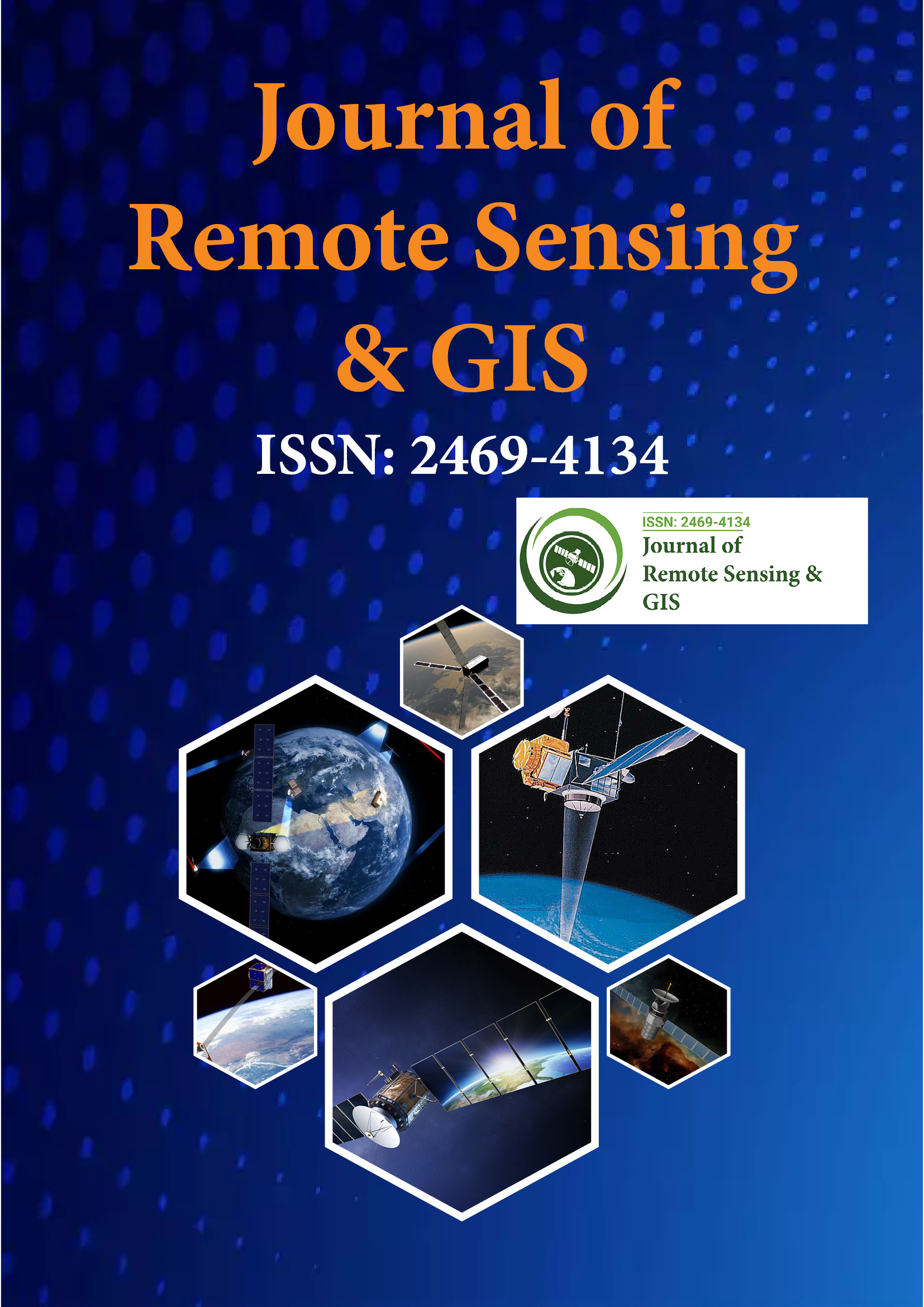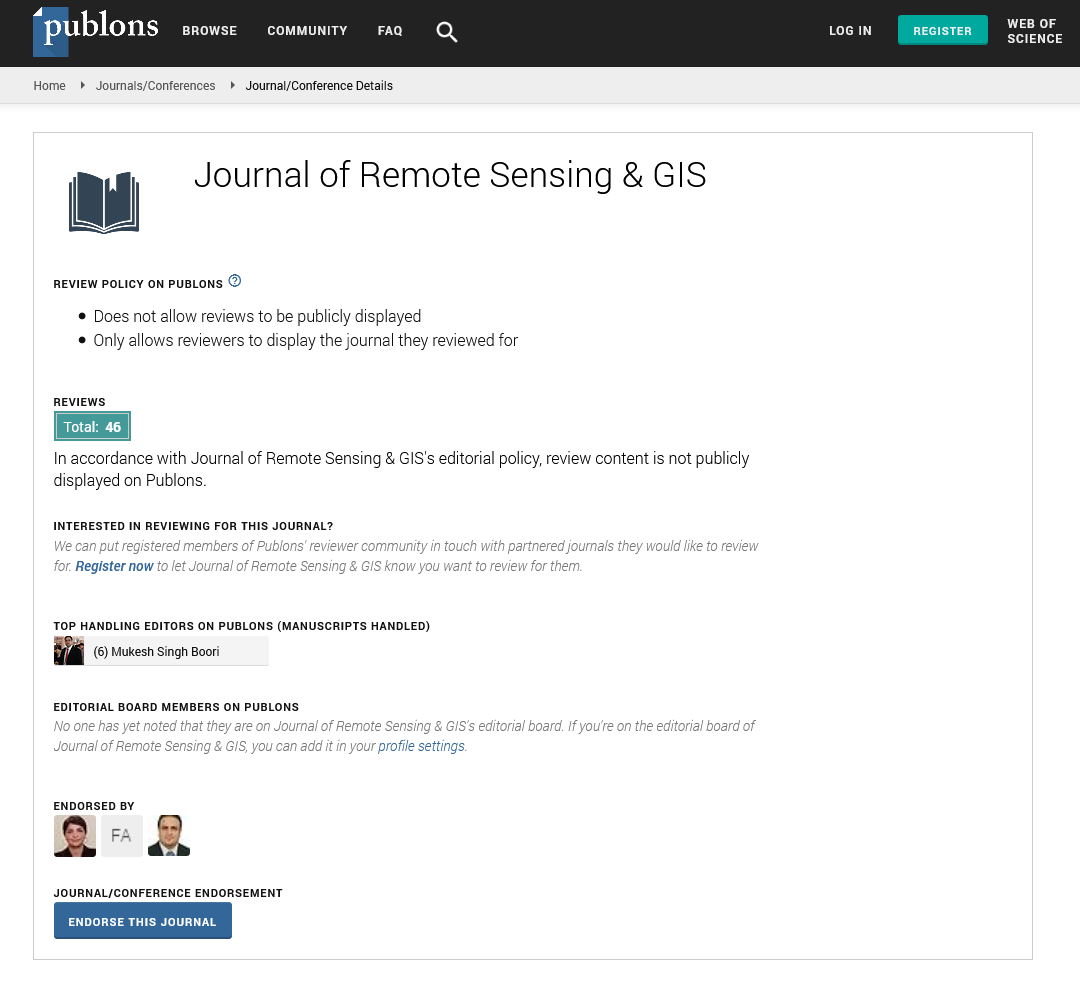Indexed In
- Open J Gate
- RefSeek
- Hamdard University
- EBSCO A-Z
- OCLC- WorldCat
- Publons
- International Scientific Indexing
- Euro Pub
- Google Scholar
Useful Links
Share This Page
Journal Flyer

Open Access Journals
- Agri and Aquaculture
- Biochemistry
- Bioinformatics & Systems Biology
- Business & Management
- Chemistry
- Clinical Sciences
- Engineering
- Food & Nutrition
- General Science
- Genetics & Molecular Biology
- Immunology & Microbiology
- Medical Sciences
- Neuroscience & Psychology
- Nursing & Health Care
- Pharmaceutical Sciences
Analyzing morphological changes of riverine bars in a selected reach of the Padma River using GIS and social survey
2nd International Conference on GIS and Remote Sensing
October 02-03, 2017 Vienna, Austria
Shahreen Muntaha Nawfee and Kazi Sunzida Lisa
Department of Environmental Management, Independent University, Bangladesh
Posters & Accepted Abstracts: J Remote Sensing & GIS
Abstract:
Statement of the Problem: River banks and bars of the Padma River in Bangladesh are highly dynamic. The river has shifted its course several times in its history. The bars appear and disappear with time depending upon flow condition and sediment discharge. This erratic behavior of the river and its bars tremendously affect the life and livelihood of the bar dwellers. A comprehensive study of the river bar changes with time through image analysis and by collecting information from the people who live there can help to develop better knowledge on the nature of the riverine bar changes. Methodology & Theoretical Orientation: Landsat satellite images of the year 1975, 1995 and 2017 were collected, georectified, and classified (unsupervised) to show the river and its bars. The bars in each year were superimposed over one another to show the areas of changes during the time span (Fig.1a and 1b). The nature of bar changes was also determined from interviewing bar dwellers using questionnaire and IGD (Informal Group Discussion). Moreover, they were questioned about the impacts of these changes and their response to it. Findings: GIS analysis show, from 1975 to 1995 the river bank line shifted more to the left and midland bars were deposited along that side. The amount of erosion-accretion of the bars was almost similar in this period. From 1975 to 2017 the right bank shifted more to the right and left bank to the left thus widening the channel. Simultaneously, huge amounts of midland bar formation took place through accretion. According to the social survey the selected bar disappeared after 1975. It re-appeared last 20 years back and has been stable since then. The image analysis concurs with this finding. The changing morphology of the riverine bars resulted in significant loss of land property of the dwellers, leaving them with no other options but to migrate. The majority of the bar dwellers move to nearby lands (other side of the river or other bars) in response to the morphological change of the river. Some have come back to the selected bar after it has become stable in last 20 years. Conclusion & Significance: The bars analyzed underwent massive changes during the last 42 years. Both GIS analysis and social survey indicate this. Although this erratic behavior of the river bank and bars are well known, the impacts of these on the riverine bar dwellers could not be lessened. The only way they have been responding to these changes were through migration. A detailed analysis of the river bar behavior using GIS and local peopleā??s knowledge can help to develop better ways to adapt to these changes.

